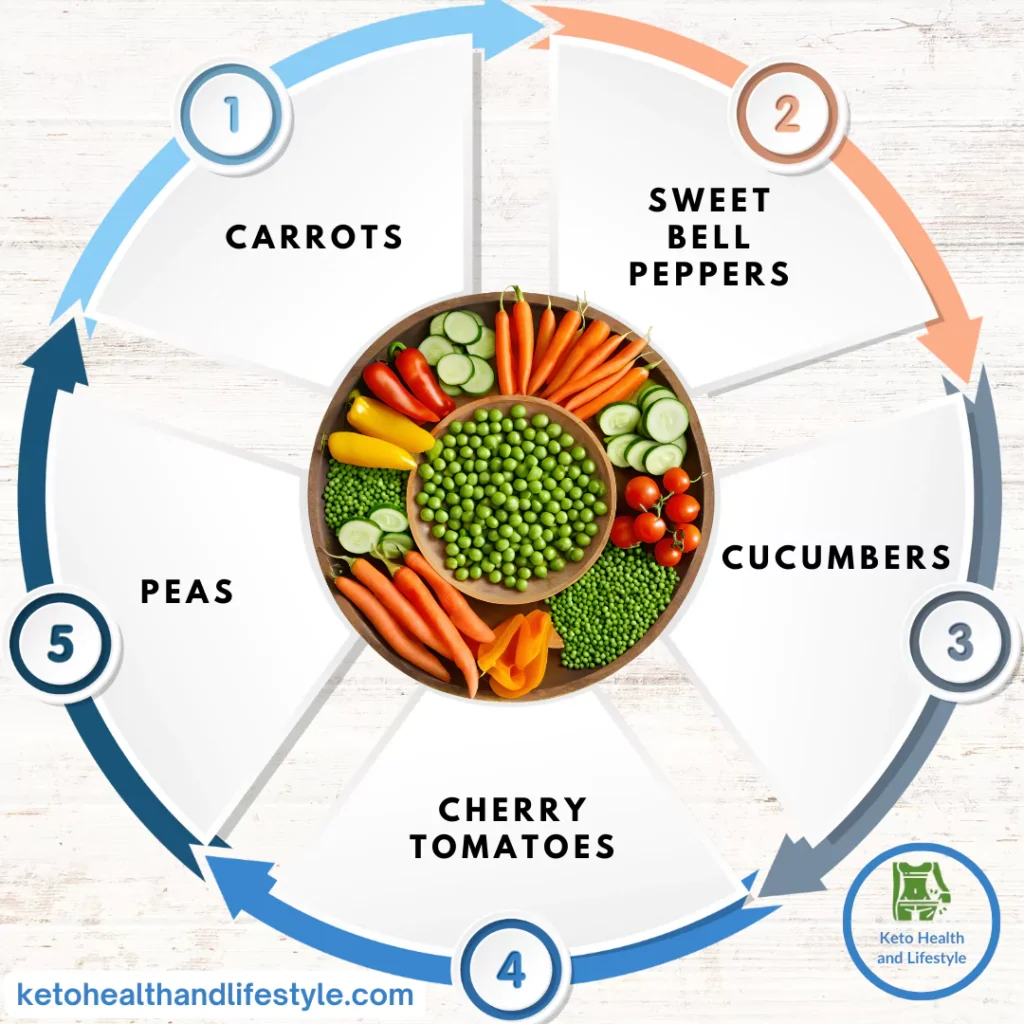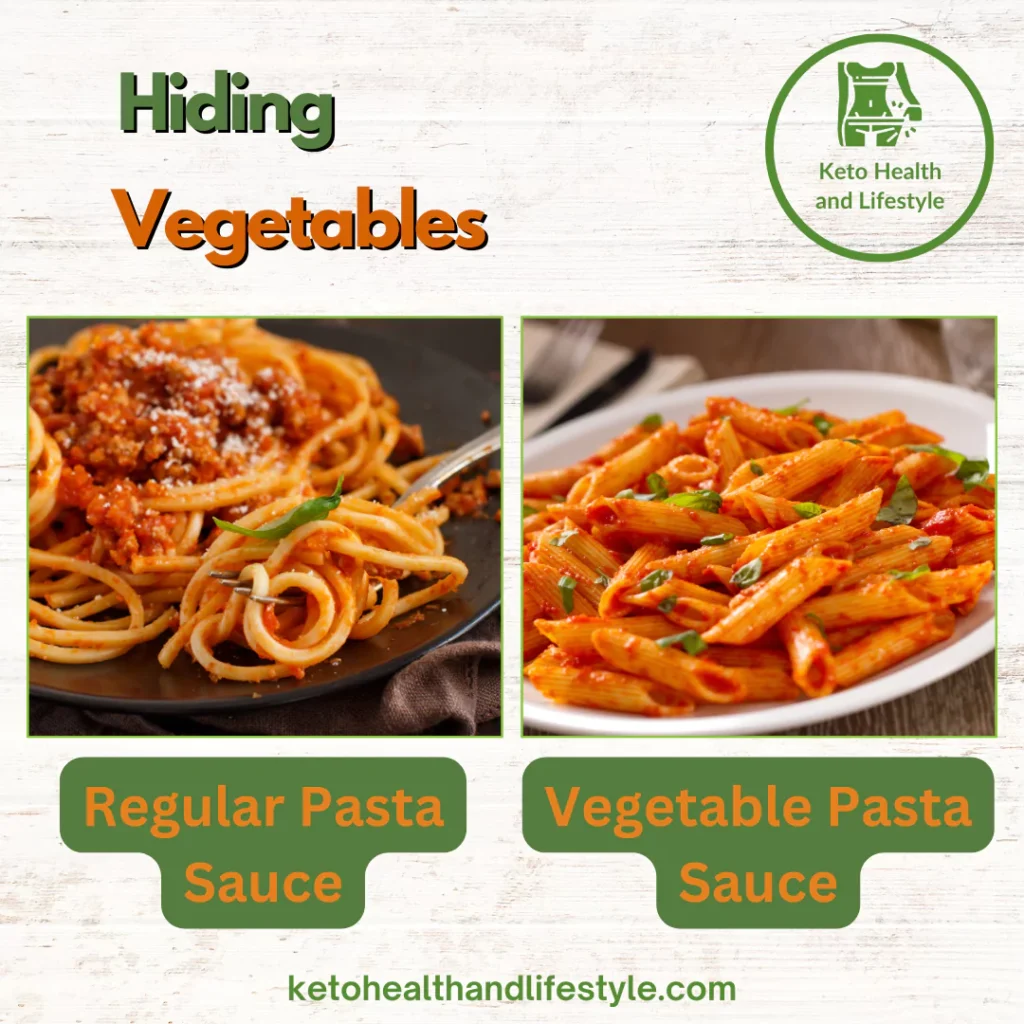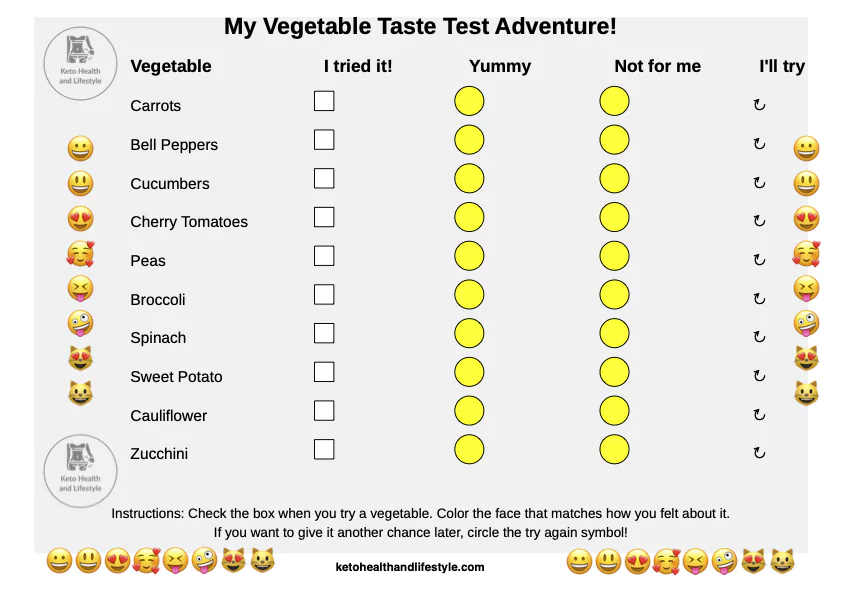This post may contain affiliate links which means I may receive a commission for purchases made through links. Learn more about policies on my about page.
TL;DR (30-Second Read)
Wondering what vegetables to try for picky eaters? Start with naturally sweet options like carrots, bell peppers, and cherry tomatoes. Learn how to hide vegetables for picky eaters by blending them into sauces or sneaking them into favorite dishes. Discover creative ways to make vegetables taste good for picky eaters, such as roasting for added flavor or using fun presentations. Patience and persistence are key – keep offering a variety of vegetables and lead by example to encourage healthier eating habits.
Table of Contents
Introduction
Are you struggling to get your picky eater to embrace vegetables? You’re not alone. Many parents face this challenge daily, but there’s hope! This comprehensive guide will explore what vegetables to try for picky eaters and provide practical strategies to make veggies more appealing. Whether you’re dealing with a fussy toddler or a vegetable-averse adult, these tips and tricks will help transform mealtime battles into culinary adventures.
Understanding Picky Eaters
Before diving into our vegetable recommendations, it’s crucial to understand why some people are more selective about their food choices.
Common Reasons for Picky Eating
- Texture Sensitivity: Some individuals, especially children, may be sensitive to certain food textures. Crunchy carrots or mushy peas might be off-putting due to their mouthfeel rather than taste.
- Previous Negative Experiences: A bad experience with a particular food can create lasting aversions. If someone once gagged on spinach, they might be hesitant to try it again.
- Parental Influences: Children often mirror their parents’ attitudes towards food. If parents avoid greens or express distaste for vegetables, children may adopt similar habits.
- Sensory Processing Issues: Some children with sensory processing disorders may find certain foods overwhelming due to their taste, smell, or texture.
Understanding these factors can help you approach picky eating with empathy and develop effective strategies for introducing new vegetables.
The Importance of Vegetable Variety
Encouraging a diverse vegetable intake is essential for several reasons:
- Nutritional Benefits: Different vegetables provide various vitamins, minerals, and antioxidants necessary for optimal health and growth.
- Developing a Balanced Palate: Regular exposure to different tastes and textures helps build a more adaptable and accepting palate.
- Keeping Meals Interesting: Variety keeps mealtime exciting and reduces monotony, making kids more willing to experiment with their food choices.

Top 5 Vegetables for Picky Eaters
Let’s explore what vegetables to try for picky eaters and ways to serve them:
1. Carrots
Why They Work: Carrots have a natural sweetness that appeals to many picky eaters. They’re rich in beta-carotene, fiber, and vitamins.
Serving Ideas:
- Raw carrot sticks with hummus or ranch dressing
- Roasted carrot “fries” seasoned with herbs
- Grated carrots in muffins or smoothies (a great way to hide vegetables for picky eaters)
2. Sweet Bell Peppers
Why They Work: These colorful veggies are crisp and slightly sweet, making them visually appealing and tasty.
Serving Ideas:
- Sliced raw peppers with dip
- Stuffed bell peppers with rice and cheese
- Grilled pepper strips in fajitas
3. Cucumbers
Why They Work: Cucumbers offer a satisfying crunch and mild flavor, perfect for those who shy away from strong tastes.
Serving Ideas:
- Cucumber slices with tzatziki dip
- Cucumber boats filled with cream cheese and herbs
- Spiralised cucumber “noodles” in salads
4. Cherry Tomatoes
Why They Work: These small, sweet tomatoes are like nature’s candy and can be a gateway to other vegetables.
Serving Ideas:
- Cherry tomato “poppers” as a snack
- Halved cherry tomatoes in pasta salads
- Roasted cherry tomatoes as a side dish (a great way to make vegetables taste good for picky eaters)
5. Peas
Why They Work: Peas are small, sweet, and easy to mix into various dishes without being overwhelming.
Serving Ideas:
- Frozen peas as a cool snack
- Pea and mint soup
- Mashed peas as a spread on toast

Creative Ways to Serve Vegetables
Getting creative with vegetable presentation can make a world of difference when figuring out what vegetables to try for picky eaters:
- Incorporate into Favorite Dishes: Blend pureed vegetables into sauces or mix finely chopped veggies into casseroles. This is an excellent method for how to hide vegetables for picky eaters.
- Fun Presentation: Use cookie cutters to create vegetable shapes or arrange veggies into funny faces on the plate.
- Involve Kids in Cooking: Let children help wash, peel, or chop vegetables to increase their interest in the final dish.

Tips for Encouraging Vegetable Consumption
- Positive Reinforcement: Praise children for trying new vegetables to reinforce positive behavior.
- Lead by Example: Demonstrate enthusiasm for eating vegetables yourself.
- Offer Choices: Let kids choose between two vegetable options to give them a sense of control.
- Be Patient: It can take multiple exposures before a child accepts a new food. Keep offering without pressure.
- Make it Fun: Use vegetable-themed games or stories to make veggies more appealing.

How to Make Vegetables Taste Good for Picky Eaters
- Roasting: Roasting brings out natural sweetness and creates a crispy texture that many picky eaters enjoy.
- Seasoning: Experiment with different herbs and spices to enhance flavor without overwhelming the vegetable taste.
- Pairing: Serve vegetables alongside favorite dips or sauces to make them more palatable.
- Blending: Incorporate vegetables into smoothies or soups for a smoother texture and milder taste.
- Grilling: Grilled vegetables often have a smoky flavor that can appeal to picky eaters.

Conclusion
Introducing what vegetables to try for picky eaters is a journey that requires patience, creativity, and persistence. By offering a variety of colorful, tasty vegetables and using engaging presentation techniques, you can help even the fussiest eaters develop a love for nutritious veggies. Remember, every small victory counts, and with time, your efforts will contribute to healthier eating habits that can last a lifetime.
Keep experimenting with different vegetables and preparation methods. Your picky eater might surprise you by discovering a new favorite veggie!

Download Our Printable Vegetable Taste Test Adventure Chart pdf!
Using the Chart:
Introducing our “Vegetable Taste Test Adventure” chart! This fun and interactive tool is designed to make trying new vegetables an exciting journey for your picky eater. By visually tracking their experiences, children can feel a sense of accomplishment and control over their food choices. This chart turns the challenge of introducing vegetables into a game-like adventure, encouraging kids to expand their palates in a pressure-free way.
Suggestions for Parents:
- Make it a family activity: Fill out the chart together as a family. When children see parents and siblings participating, they’re more likely to engage enthusiastically.
- Set realistic goals: Start with trying one new vegetable per week. This pace keeps the experience fun without overwhelming your child.
- Celebrate all interactions: Praise your child for trying a vegetable, regardless of whether they liked it. The goal is to encourage openness to new experiences.
- Use creative preparation methods: If a child doesn’t enjoy a vegetable prepared one way, try a different cooking method before marking it as “Not for me.” For example, if steamed broccoli isn’t a hit, try roasted broccoli “trees” next time.
- Revisit vegetables: Encourage children to give vegetables second chances. Taste preferences can change over time, so circling the “try again” symbol keeps options open.
- Let them choose: Allow your child to pick which vegetable to try next. This gives them a sense of control and investment in the process.
- Make it visually appealing: Use colorful markers or stickers to fill out the chart. The more visually engaging it is, the more likely children are to participate.
- Share the adventure: If your child is comfortable, share their progress with friends or relatives. This can create a supportive environment and maybe even some friendly competition.
- Use it as a learning tool: Discuss the nutritional benefits of each vegetable as you try them. This educates your child about healthy eating in a practical way.
- Reward progress: Consider setting a goal, such as trying five new vegetables, and plan a special treat or activity when that goal is reached.
Remember, the key is to keep the experience positive and pressure-free. This chart is a tool to make vegetable exploration fun and engaging, turning what could be a challenging process into an exciting family adventure. With patience and creativity, you can help your picky eater discover new favourite vegetables and develop healthier eating habits that can last a lifetime.

